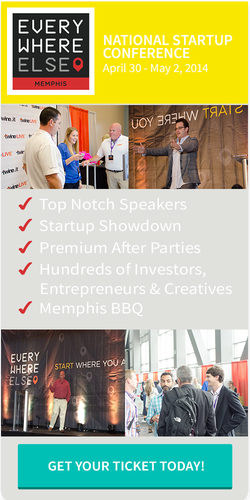For many of us, the Fourth of July conjures up images of fireworks, hotdogs, and the unofficial start of the summer season. But when we celebrate Independence Day, it’s also important to reflect on what our founding fathers gave our nation as well as the lessons they can teach us about great leadership.
Fifty-six men signed the Declaration of Independence. They were lawyers and merchants, farmers and large plantation owners. They were educated, wealthy men. They signed and pledged their lives, fortunes, and honor to ensure that the 13 colonies could establish a sovereign nation, truly leading others by their example.
In today’s workplace, most people equate leadership with a specific position or job title. But you need more then a title on the door to have followers. True leadership is the ability to influence people to achieve a better result for an entire organization or group.
The most effective leaders have a very strong sense of self; they understand the qualities that make other people want to follow them and they know how to adjust those qualities when circumstances require them to do so. The most effective leaders are those who:
- Know their own strengths and limitations;
- Create and effectively communicate a positive, realistic vision;
- Motivate and inspire followers to reach their potential;
- Look beyond their own self-interest and encourage others to do the same;
- Anticipate and manage conflicts fairly and objectively;
- Exhibit self-confidence;
- Respect and maintain personal and organizational values;
- Are fair, reasonable and compassionate;
- Instill trust; and
- Behave consistently.
These leaders develop and articulate reasonable goals and hold people (including themselves) accountable. They are prepared to make difficult decisions and balance the sensitivity of individual needs with organizational needs. Employees not only recognize their power and authority but they accept it and follow these trusted leaders willingly.
There are two ways to get people to do what you want: compel them by using your “position” power or persuade them by using your “personal-relational” power. In certain situations, compelling your team to do something based solely on your position power may work best to meet production needs. But a consistent approach of, “Do this because I said so” will not serve you well in the long term because it will limit your ability to develop “personal-relational” power.
Persuasion requires developing relationships based an understanding of what makes people tick and what motivates them. The trick is to figure out how to influence and motivate your staff through the effective use of both the proverbial carrot AND stick.
An honest assessment of your leadership qualities will enable you to capitalize on your natural strengths and work to improve those you find more challenging. Ask yourself, “What kind of leader do I want to be?” and “How do I want to be perceived by those reporting to me?”
Then, create a written credo summarizing your values, beliefs, and management philosophy to help you focus not only on what you want to accomplish but how you want to do it. These are important considerations not only because it will enable you to develop effective relationships but also because it will enable you to complete the tasks at hand more effectively, making YOU more valuable to your organization.
To be a good leader, it is critical to develop management skills relating to delegation and feedback. Differences in employee abilities, skills, and style are inevitable and must be managed in order to meet workplace demands. Leaders who learn to recognize these differences and flex their leadership style to meet those needs will be more successful at managing and motivating their employees to achieve organizational objectives.
To delegate effectively, always operate under the principal that you can never be too clear. Here are some tips:
- Take the time to explain the goals and objectives. If everybody from administrative support to senior staff understands the overall objective (which typically can be explained in 3 sentences in less than 30 seconds) or how their segment of the project ties into the overall goal, they will be more invested in the project and better serve the needs of the organization.
- Let people know how you want information to be shared (via e-mail, voicemail, meetings, etc.), who else is working with them, and any other peculiarities specific to this project. Most importantly, let them know how best to approach you throughout the project if they need clarification or further instruction. Do not allow yourself to become a choke point or source of frustration for your team.
- Set specific deadlines – “ASAP” is meaningless. So is “In a few days.” Try, “I need it in an hour,” or “I need it Wednesday afternoon.” Leave no room for ambiguity. Setting specific deadlines and allowing your team to manage their own workload will ameliorate your constant need to hover and inquire, “Is it done yet?” to the relief of both you and your team members. It is equally important that YOU adhere to team deadlines. Lead by example. Again, if you become a choke point, you will frustrate members of your team and ultimately sabotage your own career.
- Provide on-going feedback to allow for corrections to be made as the project progresses. Capture those “teachable moments” along the way to strengthen your team. When delivered properly, feedback not only creates trust and cooperation; it focuses on improvements, both possible and those actually achieved. It increases skills, improves employees’ confidence and enhances your personal-relational power.
On-going, informal feedback enhances the formal appraisal process because staff members receive messages throughout the year offering immediate corrective action for very specific behaviors. The formal review can than be used to reinforce those message and focus on systematic goal setting to ensure the professional development of each person for the benefit of the individual as well as the organization.
Keep in mind, not all managers are leaders, but every leader is a manager. Your goal is not simply to make everyone happy (or miserable), but to understand how to capture individual talents and get the best out of each contributor. In his address to officers of the Virginia Regiment, George Washington once said, “Remember that it is the actions, and not the commission, that makes the officer, and that there is more expected from him than the title.” These words are still pertinent today. When you focus not only on the “what” of what it takes to be a successful leader but also on the “how,” you will see your sphere of influence grow and your career soar.
Kathleen Brady, CPC is an iPEC-certified career management coach with more than 25 years of experience helping people identify and realize their professional career goals. In GET A JOB! 10 Steps to Career Success (Inkwater Press, 2013) Brady shares her secrets for navigating the job search process from start to finish as well as practical exercises for job seekers at every level. GET A JOB! is available at www.amazon.com, www.barnesandnoble.com, and other online retailers. For more information, visit www.careerplanners.net.

















